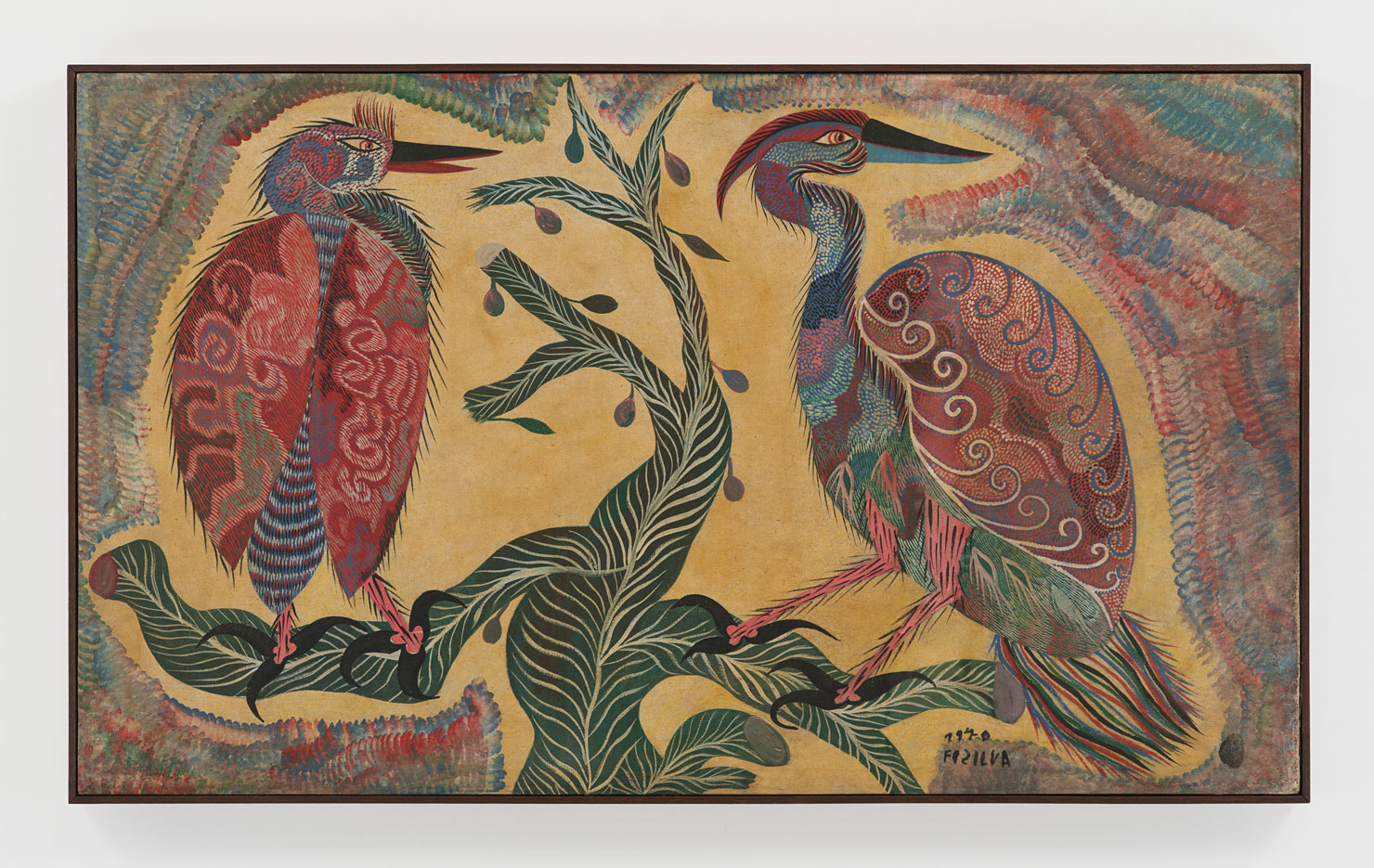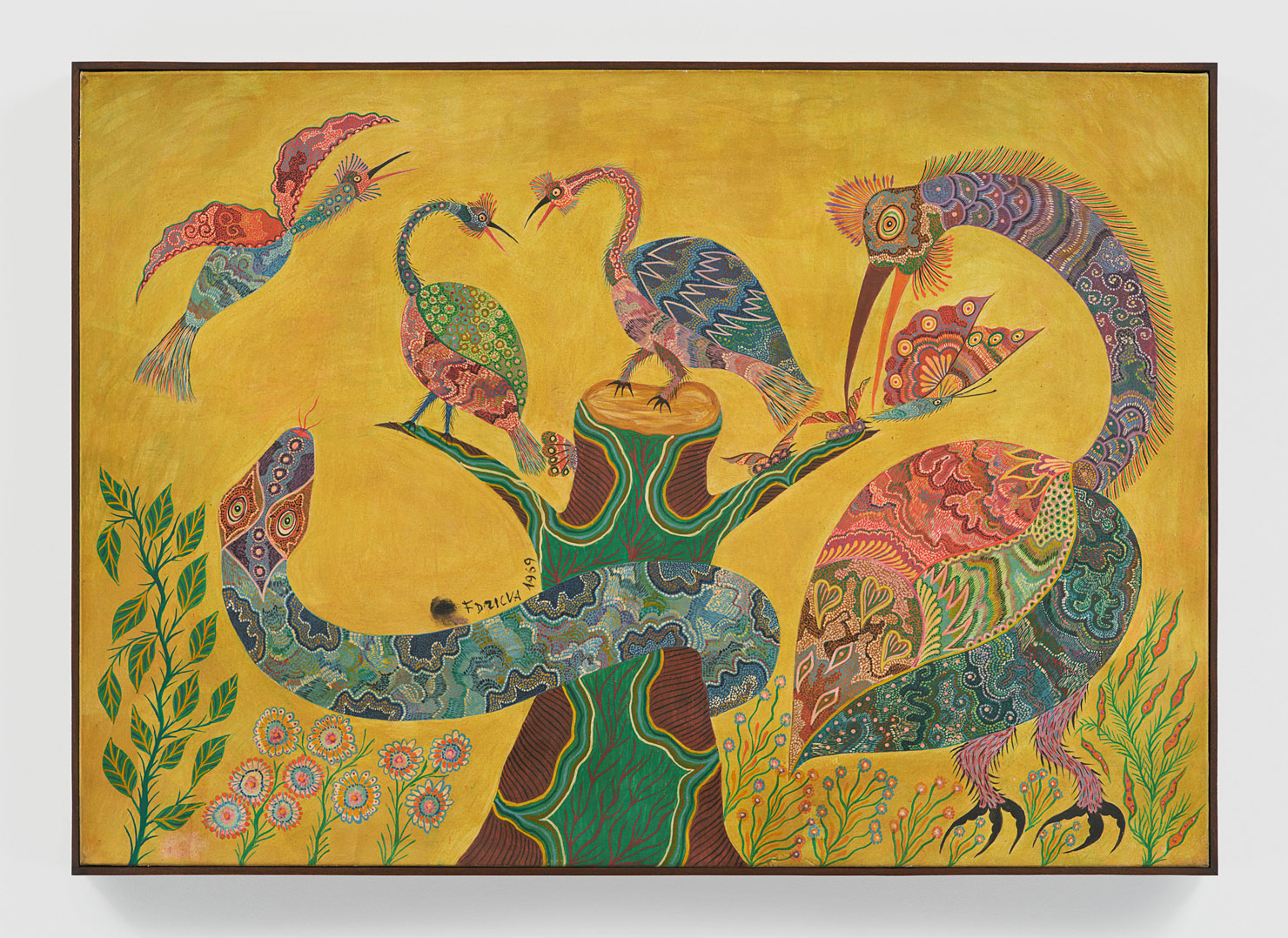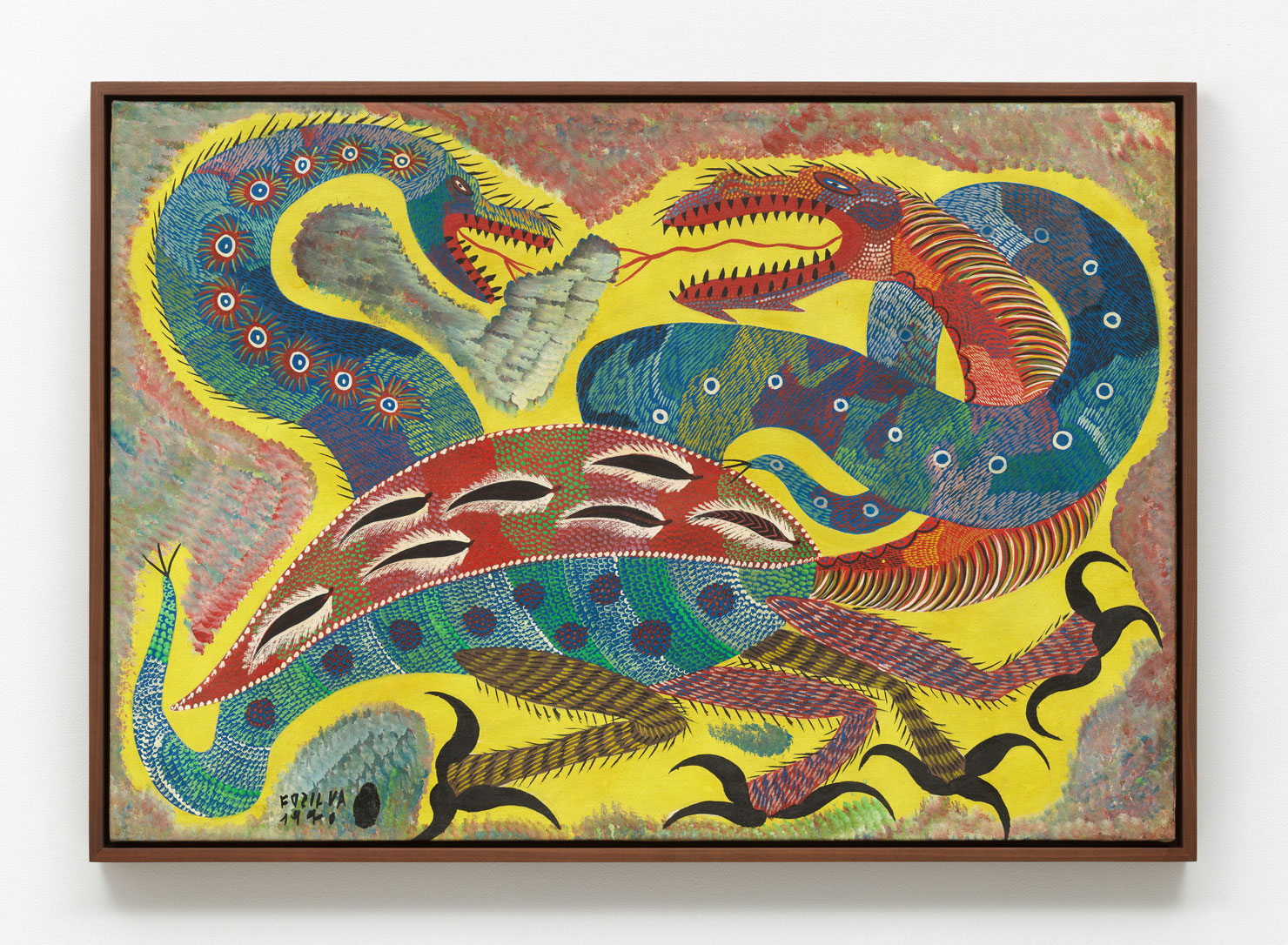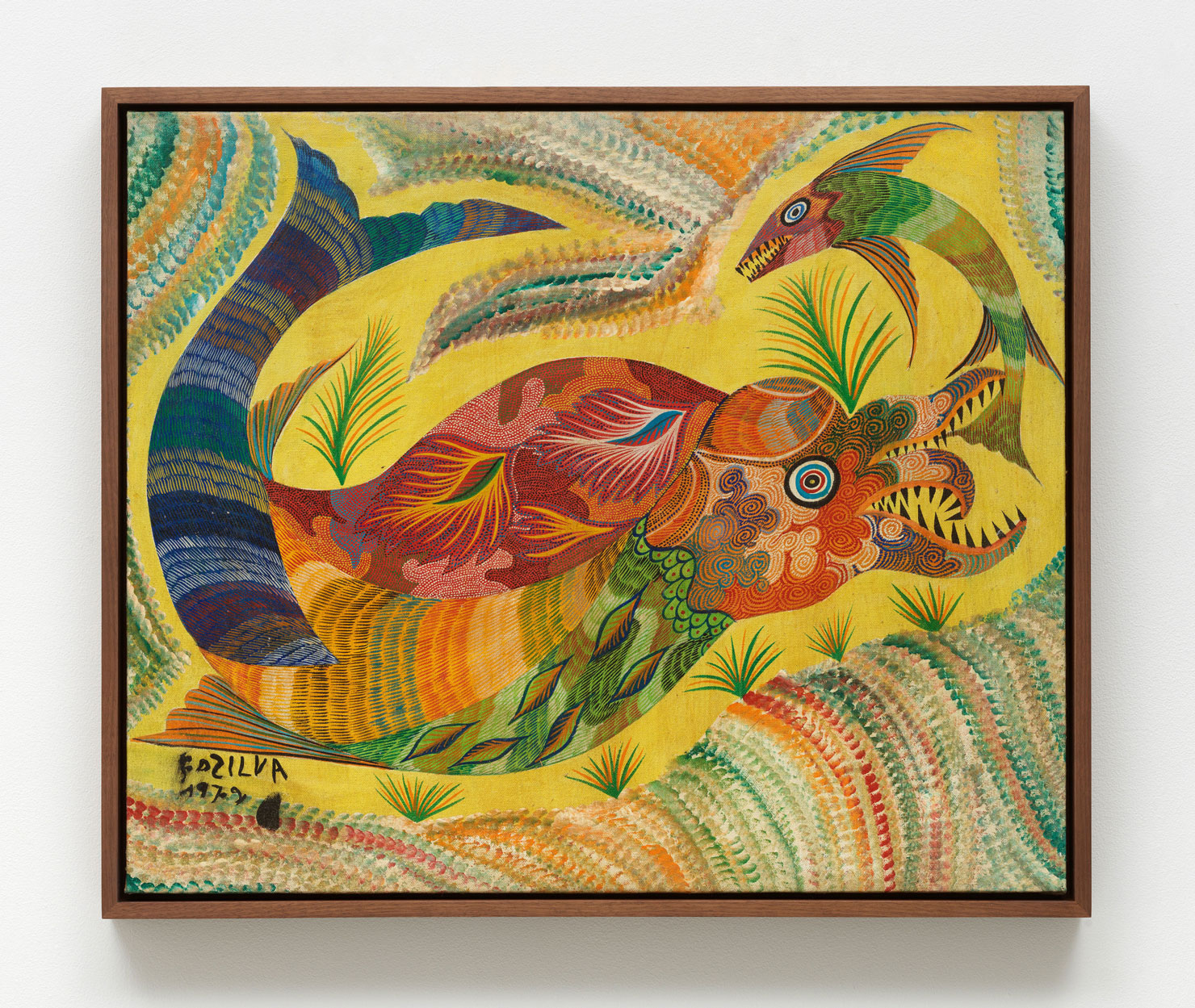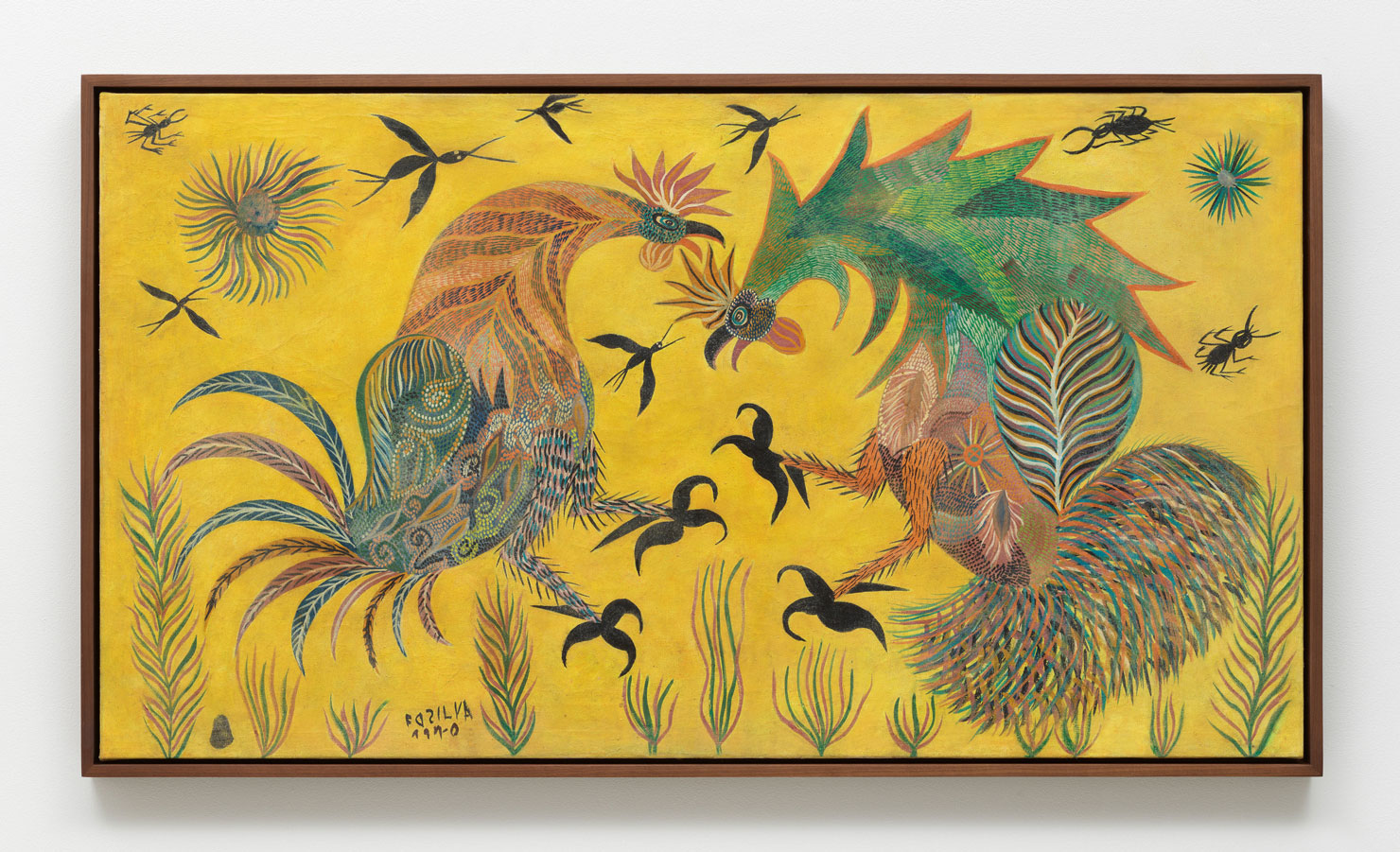ART CITIES: N.York-Chico da Silva
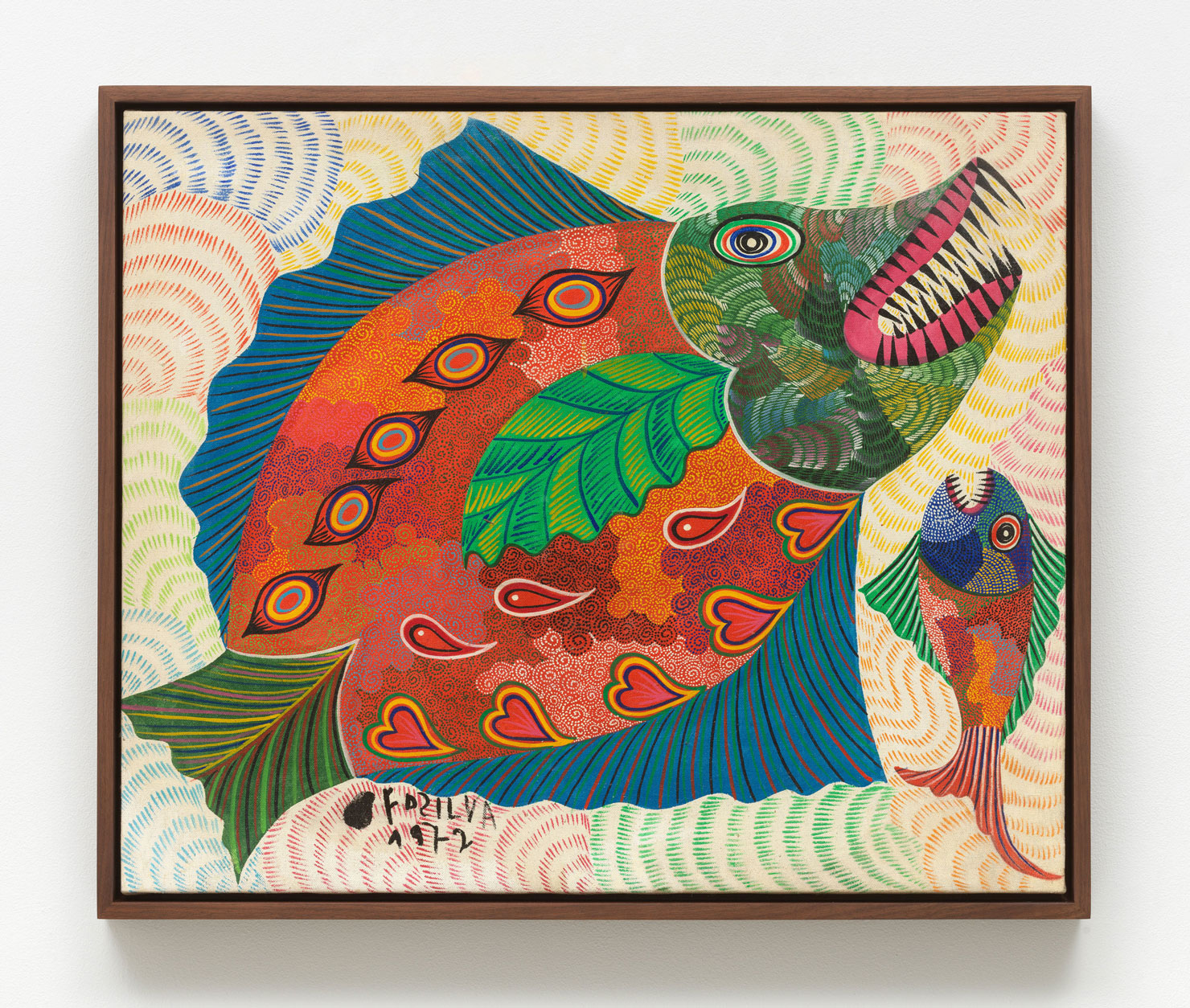 A Brazilian artist of Indigenous descent, Francisco da Silva, known as Chico da Silva or simply “Chico”, was painting fantastical universes on the walls of fishermen’s houses in the 1940s when the Swiss art critic Jean-Pierre Chabloz first encountered his visionary work. An émigré from war-torn Europe, Chabloz hailed Chico’s paintings as a pure manifestation of Brazilian visual art, which he believed had been tainted by the influence of European neoclassicism. His outsized influence, however, has left a complicated legacy for Chico’s oeuvre that is only being reckoned with today.
A Brazilian artist of Indigenous descent, Francisco da Silva, known as Chico da Silva or simply “Chico”, was painting fantastical universes on the walls of fishermen’s houses in the 1940s when the Swiss art critic Jean-Pierre Chabloz first encountered his visionary work. An émigré from war-torn Europe, Chabloz hailed Chico’s paintings as a pure manifestation of Brazilian visual art, which he believed had been tainted by the influence of European neoclassicism. His outsized influence, however, has left a complicated legacy for Chico’s oeuvre that is only being reckoned with today.
By Dimitris Lempesis
Photo: David Kordansky Gallery Archive
Paintings and works on paper by Chico da Silva are on show in David Kordansky Gallery. Born to an indigenous Peruvian father and a Brazilian mother, Chico da Silva (1910-1985) grew up in the Northwestern state of Acre, where his childhood was shaped by the dense Amazonian rainforest as well as the catechizing agendas of the area’s European missions. While it’s speculated that the artist’s father was of the Kashinawa or Huni Kuin group, the degree to which Chico, who identified simply as caboclo, felt connected to his indigeneity is unclear. Following his father’s death, Chico and his mother moved to Fortaleza, where they settled in Pirambu, an impoverished neighborhood made up primarily of migrants united by the shared political struggle for housing and stability. Chico’s first known engagement with art was here, in the 1940s, when he began using black charcoal and natural pigment to draw murals on the exteriors of fishermen’s houses. These works caught the eye of Swiss art critic Jean-Pierre Chabloz, who, positioning himself as the “discoverer” of the “primitive” painter, assumed a complex role in Chico’s subsequent career, one simultaneously promotional and paternalizing. Chabloz introduced Chico to the gouache, paint, paper, and canvas that soon became his primary materials, and championed Chico’s work to the international art world, facilitating widespread recognition, that would culminate with Chico representing Brazil in the 33rd Venice Biennale in 1966. Reconsidered today, Chico’s exuberant, sophisticated paintings shatter the oppressive categories to which they were once relegated. Graphic, often mythological or enchanted representations of creatures and Brazilian flora are made surreal through his bold colors, intricate line work, vivid patterning, and exaggerated features like elongated claws, tongues, and beaks. Other elements of anthropomorphized figures—like open mouths receiving food, large, spellbound eyes, and floating appendages—connect nature to humanity, situating all of life within a broad cosmology of the artist’s own making. This narrative approach to painting, apparent throughout Chico’s career, allowed him to link life in a poor urban area to a realm of dream and fantasy. As he once noted, “These worlds that I paint are not memories from the time I was a boy. This is called imagination, occult sciences, astronomy…” While Chico didn’t depict stars or planets, the astronomy that his works evoke suggests a larger, non-hierarchical interconnectedness in which organisms floating in the deep sea mirror matter drifting through outer space. If the expression of his worldview through visual means came second nature to Chico, so, too, did his choice to integrate his community into the making of his increasingly in-demand work. In the early 1960s, Chico established the Pirambu School, an informal workshop in which local artists and curious neighbors learned Chico’s techniques, worked as paid collaborators, and, with his support, developed their own bodies of work. The communal ecosystem of Pirambu was inherently symbiotic: while the exact number of participants remains opaque, it’s known that five key artists: Babá (Sebastião Lima da Silva), Claudionor (José Claudio Nogueira), Garcia (José dos Santos Gomes), Ivan (Ivan José de Assis), and Chico’s daughter Chica (Francisca Silva); helped streamline the production of Chico’s paintings while also making important creative contributions through their ongoing additions to Chico’s core typologies. In its most organized form, the studio process allowed each artist to contribute his or her own particular skills to Chico’s visions. Chico da Silva’s legacy, belatedly reappraised, reveals him to be not only a painter of remarkable skill and breadth, but a practitioner for whom working alongside one’s neighbors was the intuitive outcome of a long-established way of life that was centered on communal gathering and the necessary sharing of resources. In forging a practice that eschewed the desires and value systems of a midcentury European and American art world, Chico and the Pirambu School established a sovereign Brazilian art as visually dazzling as it is assertive in its resistance to colonial intervention.
Photo: Chico da Silva, Untitled, 1972, acrylic and mixed media on canvas, 22 7/8 x 27 3/4 inches (58.1 x 70.3 cm), framed: 24 3/8 x 29 1/4 x 2 inches (61.9 x 74.1 x 5.1 cm), Courtesy David Kordansky Gallery
Info: David Kordansky Gallery, 520 West 20th Street, New York, NY, USA, Duration: 27/10-16/12/2023, Days & Hours: Tue-Sat 10:00-18:00, www.davidkordanskygallery.com/
